- Data Basin |
- Datasets |
- Pacific Northwest Terrestrial Local Landscape Permeability
Pacific Northwest Terrestrial Local Landscape Permeability
Apr 13, 2015
Uploaded by
GNLCC Connectivity Atlas Data Coordinator
This map service is unavailable
- Description:
- These data are the final landscape permeability data as described in the report "Conserving Nature's Stage: Identifying Resilient Terrestrial Landscapes in the Pacfic Northwest."Permeability refers to the connectivity of a focal cell to its ecological neighborhood when it is viewed as a source; in other words, it asks the question: “to what extent are ecological flows outward from that cell impeded or facilitated by the surrounding landscape?” Thus,permeability starts with a focal cell and looks at the resistance to ecological flow outward in all directions through the local neighborhood. As resistance increases, flow is impeded or stopped altogether. Areas of no resistance allow the flow to proceed until a user-specified maximum distance is achieved. Therefore, cells grow further in directions of low resistance. This process is repeated for every cell across the analysis extent, and the results are combined to create this final surface. The resistance surface used to calculate permeability is included in this geodatabase (RESIST_90_ALL_ECOREG).The method used to map local permeability for the region was resistant kernel analysis, developed by Brad Compton using software developed by the UMASS CAPS program (Compton et al. 2007, http://www.umasscaps.org/). Specifically, each cell of a resistance grid is coded with a resistance value based on land cover and landuse. Land cover and land use classes are assigned a resistance weight by the user. The theoretical flow outward from a focal cell is a function of the resistance values of the neighboring cells and their distance from a focal cell out to a maximum distance of three kilometers. When all cells have grown to their maximum extent, each cell is scored proportionally to the number of neighborhood cells that were able to grow into it. Higher scores indicate the landscape is more permeable, as more cells were able to traverse the intervening resistance landscape. Each cell is assigned a permeability value based on this flow. See www.nature.ly/resilienceNW for the full report and additional resources.
- Data Provided By:
-
Brad McRae
Ken Popper
Michael Schindel
Steve Buttrick
- Data Hosted by:
- ScienceBase (USGS) View Record
- Map Service URL:
- https://www.sciencebase.gov/arcgis/rest/services/Catalog/5525c0e3e4b026915857c5f1/MapServer/
- Content date:
- 2015-02-01 (Publication Date), 2015-02-01 (Time Period)
- Contact Organization:
- The Nature Conservancy
- Contact Person(s):
-
- Brad McRae
- Ken Popper
- Michael Schindel
- Steve Buttrick
- Use Constraints:
- Aquatic resources such as rivers and lakes should not be evaluated with these data. Near-shore marine areas including estuaries and small islands should also not be evaluated with these data, as tides, oceanic climate and sea-level rise may confound analyses built upon terrestrial data inputs and assumptions.The Nature Conservancy reserves all rights in data provided. All data are provided as is. This is not a survey quality dataset. The Nature Conservancy makes no warranty as to the currency, completeness, accuracy or utility of any specific data. This disclaimer applies both to individual use of the data and aggregate use with other data. It is strongly recommended that careful attention be paid to the contents of the metadata file associated with these data. The Nature Conservancy shall not be held liable for improper or incorrect use of the data described and/or contained herein. The use of these data to produce other GIS products and services with the intent to sell for a profit is prohibited without the written consent of the Nature Conservancy. All parties receiving these data must be informed of these restrictions. The Nature Conservancy shall be acknowledged as data contributors to any reports or other products derived from these data.
- Layer:
- Layer Type:
- Currently Visible Layer:
- All Layer Options:
- Layers in this dataset are based on combinations of the following options. You may choose from these options to select a specific layer on the map page.
- Description:
- Spatial Resolution:
- Credits:
- Citation:
- Purpose:
- Methods:
- References:
- Other Information:
- Time Period:
- Layer Accuracy:
- Attribute Accuracy:
FGDC Standard Metadata XML
Click here to see the full FGDC XML file that was created in Data Basin for this layer.
Original Metadata XML
Click here to see the full XML file that was originally uploaded with this layer.
This dataset is visible to everyone
- Dataset Type:
-
External Map Service (ArcGIS)
Bookmarked by
2 Members
,
3 Groups
Included in
1 Private Map
Included in
3 Public Galleries
,
1 Private Gallery
[{"url": "https://www.sciencebase.gov/catalog/file/get/5525c0e3e4b026915857c5f1?f=__disk__b8%2F73%2F1c%2Fb8731cc424d99432e7efe8f3d5d8a5a449175ace", "title": "PNW_RESILIENCE_20150201_metadata.html"}, {"url": "https://www.sciencebase.gov/catalog/file/get/5525c0e3e4b026915857c5f1?f=__disk__ef%2F34%2F2e%2Fef342ebc60d560fe3d520c2cb091becc4948988c", "title": "PNW_RESILIENCE_20150201_metadata.txt"}, {"url": "https://www.sciencebase.gov/catalog/file/get/5525c0e3e4b026915857c5f1?f=__disk__06%2Fa7%2Ffa%2F06a7faab20d8af0cdd93b2c4d8015d2a350f1723", "title": "Download Original Metadata"}]
About the Uploader

GNLCC Connectivity Atlas Data Coordinator
with Great Northern LCC
This is the administrator account for managing the Great Northern LCC Connectivity Atlas.


